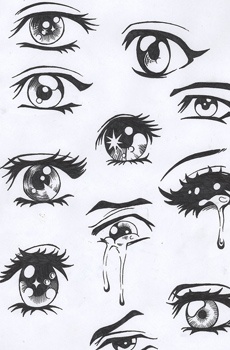2015年1月26日月曜日
I won't say I'm in love 日本語
私の好きなディズニーの歌
Watashi no sukina dizunī no uta
= my favourite Disney song? :):)):):)
2015年1月25日日曜日
2015年1月23日金曜日
2015年1月22日木曜日
For those completely new to Japanese summary
For those completely new to Japanese
the writing system
"most words are written in kanji. You need to learn about 2,000 characters to be able to read most of Japanese. makes things easier in a sense. Let me explain. learning a language is memorizing the 20,000 some words. English memorize the spelling and definition of 20,000 separate wordsWith Japanese, if you learn how to read and recognize just 2,000 characters.
japanese grammar
change essentially the way you think in order to naturally express yourself in Japanese. In Japanese, the subject is usually left out (unless there is no way the listener could know what the subject is. )“less-is-more” philosophy
Politeness levels
But even people above you will be referred to in the humble form if you are addressing somebody who is above them.
Pronounciation
pitches are so important that sometimes Japanese people will look at you with a puzzled expression and finally say, “Oh, you’re saying that word!” and say essentially the same word you were saying all along.
You may be wondering, “Can I ever really sound like a Japanese?” It depends to some extent on how old you are and how good your ear is.
-summary by ***** ********
original fucking text fromhttp://www.guidetojapanese.org/blog/2006/01/30/for-the-complete-beginner/
original fucking text fromhttp://www.guidetojapanese.org/blog/2006/01/30/for-the-complete-beginner/
2015年1月21日水曜日
2015年1月20日火曜日
How Japanese women ask men to "make Love!
☆How Japanese women ask men to "make L♡ve!☆
☀----------------------------------------★-----------------------------------------☀
(the gril is speaking nihongo so this video is educational)
pixel art ☆
http://princess-pixel.tumblr.com/page/13
http://pixels--galore.tumblr.com/post/39921584200/pixel-food
http://pixels--galore.tumblr.com/post/39921584200/pixel-food
2015年1月18日日曜日
The Sentence Ending Particles “Ne” and “Yo”
The Sentence Ending Particles “Ne” and “Yo”
There are two other sentence ending particles that work much the same way as the question marker ka.
Recommended Background:
Asking and TellingThe particle ね “ne”, variously translated as “right?”, “huh?”, or “isn’t it?”, can be put at the end of a sentence to create sort of question.
| ざっしです。 | Zasshi desu. | It’s a magazine. |
| ざっしですか。 | Zasshi desu ka? | Is it a magazine? |
| ざっしですね。 | Zasshi desu ne. | It’s a magazine, isn’t it? |
If you listen to a native speaker, you’ll notice that the intonation isn’t quite the same as an actual question, but does rise at the end.
Essentially, ne asks for agreement or confirmation. This sentence ender is used frequently when making observations,
as in “Ii o-tenki desu ne?” which you learned earlier. In such situations, the speaker is trying to promote a smooth conversation by giving the other person an easy way to agree with them.
as in “Ii o-tenki desu ne?” which you learned earlier. In such situations, the speaker is trying to promote a smooth conversation by giving the other person an easy way to agree with them.
It’s also used when the speaker fully expects the listener’s agreement, for example:
| おそいですね。 | Osoi desu ne. | He must be late, huh? |
The final sentence ending particle, よ “yo”, is essentially the opposite of ne, it asserts a fact that the listener may not know.
| おいしいですね。 | Oishii desu ne. | This is delicious, isn’t it? (Listener has also tasted it) |
| おいしいですよ。 | Oishii desu yo. | It’s good, you know. (Listener hasn’t tried it yet) |
In general, yo shows the speaker’s conviction towards whatever they are asserting. When used with commands, it makes the command more forceful. The particle is also sometimes used to answer questions using who/what/etc. as a means of emphasis. (Read more about question words)
“Yo” and “Ne” Together
Somewhat paradoxically, Japanese people will often use both yo and ne at the end of a statement.
| たのしいですよね。 | Tanoshii desu yo ne. | This is fun! (And I hope you agree) |
Basically, the yo shows the speaker’s strong conviction for their opinion, but also expects the other person to agree with them. This highlights the softening effect of the particle ne. In an effort to avoid seeming overly assertive, Japanese people will often ask for the other person’s agreement, as well as a variety of other strategies to soften the message of the sentence.
A Few New Expressions
Now that you know all three sentence ending particles, you should be able to understand all the variations of a very common Japanese expression: sou desu.
| はい、そうです。 | Hai, sou desu. | exp. “Yes, that right.” (Response to a question) |
| そうですか。 | Sou desu ka? | exp. “It that so?” (Receiving new information) |
| そうですね。 | Sou desu ne. | exp. “So it is, isn’t it?” (Agreement with a statement) |
| そうですよ。 | Sou desu yo. | exp. “Yes, I agree.” (Strong agreement with a statement) |
| そうですよね。 | Sou desu yo ne. | exp. “Yes, I agree.” (Strong agreement with softening) |
“Sou desu” means something “that’s how it is” or “so it is”. Each of its variants has a different nuance.
- The first version is a way to affirm a yes-no question without repeating the complete sentence.
- “Sou desu ka?” is a general response to any new information, and doesn’t necessarily imply any doubt about what was just said.
- The variants including yo and ne all express agreement with what the other person just said.
Note that the simple confirmation “sou desu” (or the informal “sou da” or “sou”) can be somewhat abrupt, and adding yo or ne (or both) is often more appropriate.
登録:
コメント (Atom)














































